85 Wildlife Photography Tips For Stunning Images
Are you looking for awesome wildlife photography tips to take your wildlife images to the next level? If yes, then this guide is for you. This guide will be useful for both beginners and professionals in wildlife photography. In this article, I will share 85 wildlife photography tips based on my experiences. You can use these tips to improve your photography skills and be a better wildlife photographer.
85 Wildlife Photography Tips
1. Be Patient
Let me start with one of the most important wildlife photography tips. Patience is the key to a great wildlife photograph.
Suppose your safari jeep spotted a tiger lying inside the bushes then you should be patient enough for it to come out to get a good shot. If you photograph it with all the clutters of the bush then there is nothing interesting in that image.
2. Follow Wildlife Photography Ethics
You should always give respect to the wildlife subjects. You should not make sounds or noise to draw its attention to get good shots.
Always make sure that you are at a comfortable distance from the animal. It is essential to get a natural shot. It also ensures your safety.
3. Use Prime Lens
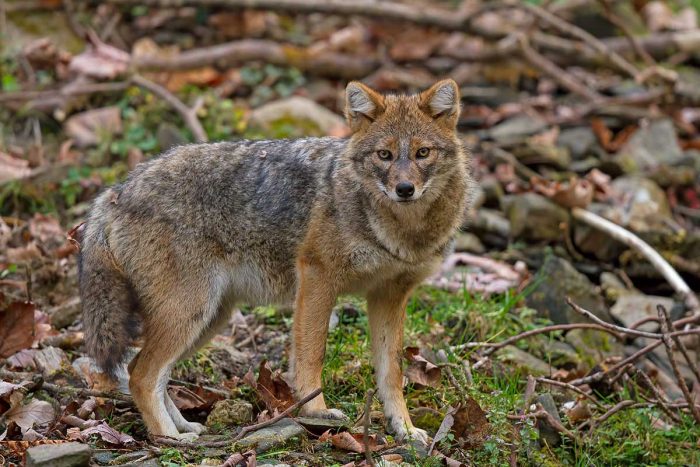
There is no replacement for a prime lens. You can never match its image quality with a zoom lens even.
It helps you to get a nicely blurred background with a shallow depth of field with their large apertures.
4. Try Wide-Angle
Try a wide-angle perspective. So, carry a wide-angle lens along with your telephoto lenses.
You can capture awesome images when the animal comes close by or when the landscape is good. Here, image composition is the key to beautiful pictures.
5. Don’t Use Flash
Don’t disturb wild animals by triggering the flash. It can harm the animal’s eyes.
Also, the animal may get angry and it can attack you.
6. Use Torch to Photograph Subjects at Night
A torch is a good tool to photograph nocturnal animals. So, always carry a good decent torch in your camera bag when you are photographing wildlife at night.
7. Wear Camouflage/Dull Clothes
Wear dull colored clothes, like shades of dull green or brown or camouflage clothes so that you don’t become a distraction for the subject. Camouflage clothes are not allowed in certain places. So, do check before using one.
8. Carry a Backup Camera Body
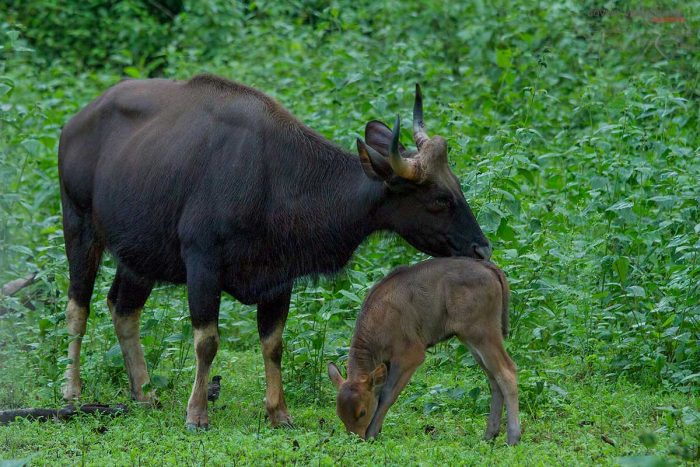
There can be situations where your main camera may throw in some issues.
So, always carry a backup camera body so that you don’t miss any photo opportunities.
9. Shoot in RAW
Always shoot in RAW format. The main advantage of using a DSLR/ Mirrorless camera is its ability to capture the image in RAW format.
So, you should make full use of that. It allows you to fine-tune your image later while post-processing.
10.Carry Spare Camera Batteries
Sometimes you may get very lucky with wildlife sightings. In these situations, you will click lots of pictures. You may even shoot videos. It will consume lots of battery power.
Also, most wildlife photographers use burst mode. So, you may run out of battery power. So, always carry spare camera batteries with you.
11. Use Burst Mode
It would be good to use continuous burst mode while capturing action wildlife photography. It will ensure that you don’t miss any good moments.
12. Do Research on your Destination
You should do proper research about the place or safari park you are visiting. It will help you to know what you can expect over there.
You can google for information or you can check with your friends who had already visited that place.
13. Spend some Time with Subject
You should spend some time with your subject. It will ensure that you get the best behavioral shots out of them.
The animal needs to get used to you to show its natural behavior. So, you should ensure that the animal is comfortable with your presence.
14. Practice
There is no replacement for “Practice”. There is a well-known saying that Practice makes a man perfect. The same is applicable to wildlife photography also. You should get out in the field and photograph subjects regularly.
15. Learn your Camera Properly
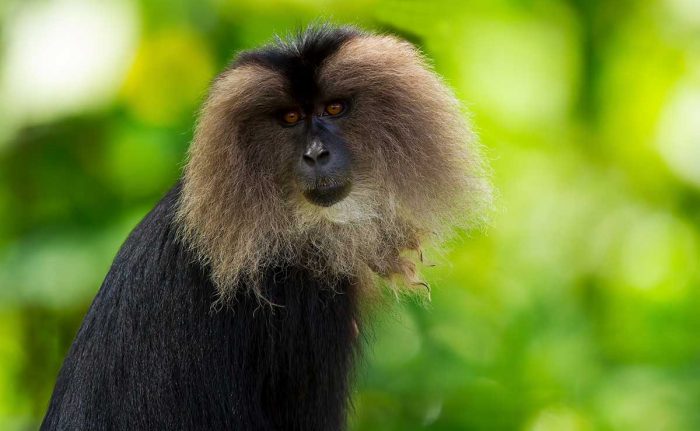
It doesn’t matter if you own a high-end camera or a budget camera. You will be able to capture good wildlife photos only if you know how to operate them.
So, go through the camera manual and try out each setting. It will help you to learn your camera in a better manner.
16. Zoom Telephoto lenses for Composition
Zoom lens can’t beat the image quality of a prime lens. But, a zoom lens has the advantage of image composition.
When you are doing wildlife photography in a safari jeep, your movements are restricted. So, when you use a prime lens you won’t get the flexibility of including the desired elements in the frame. So, carry an additional camera body fitted with a zoom lens.
17. Capture Silhouettes
The best thing to do as a wildlife photographer when the light is behind the subject is to photograph silhouettes.
The light during sunset and sunrise is the best for silhouette photography. Shoot against the Sun with the subject in the foreground.
18. Try shooting Videos
If your DSLR camera supports video recording try capturing wildlife videos too. Nowadays, short wildlife videos are getting more popular on social media sites like Facebook and Instagram. You can shoot videos and share them over there.
19. Play with Exposure
As a wildlife photographer, you don’t have to shoot always in the correct exposure.
Try underexposing or overexposing the scene to create unique images.
20. Carry Headlamp
If you are photographing at the night, it would be a good idea to use a headlamp.
21. Use Beanbag
A beanbag is a must-have accessory if you are doing wildlife photography on a safari jeep.
It will help you to stabilize your camera and lens set up when you are photographing from a vehicle.
22. Use Monopod
Sometimes, you will have to trek inside the forest or mountains for wildlife photography.
You won’t be able to carry a tripod in such a situation. So, use a monopod instead.
23. Use Tripod

Tripods are useful if you are waiting inside a hide. Make sure that you select right tripod. It must be steady while shooting.
24. Use Gimbal Head
You must use a gimbal head for wildlife photography. It helps you to pan vertically as well as horizontally.
So, you can easily move your camera and capture the image.
25. Create a Portfolio Website
You should showcase your wildlife photographs to the world, then only people would come to know about you and your works.
So, set up a photography website and upload your best wildlife photos.
26. Upload Images to Social Media Sites Regularly
Social media sites like Instagram, Facebook, and Twitter are good platforms for a wildlife photographer to showcase his/her works.
27. Don’t Litter in Wildlife Areas
Be a responsible wildlife photographer. Don’t litter in wildlife areas.
28. Try Playing with Light
You can get different types of natural lighting situations during different times of the day. So, try playing with the light around.
Don’t hesitate to photograph in harsh light. Sometimes, harsh light can be a good choice for that particular scene.
29. Follow works of other Wildlife photographers
If you want to improve wildlife photography skills then you should definitely check out the photos of other wildlife photographers. You can learn a lot from these pictures, the way they compose, the angle, and other details.
I am not telling you to copy their style. You can get inspired by their photos.
30. Join good Wildlife Photography Forums
Photography forums are a good place to get connected with many fellow wildlife photographers. It is the best place to get your pictures reviewed.
These inputs can be really useful to improve your photography skills.
31. Participate in Wildlife Photography Contests
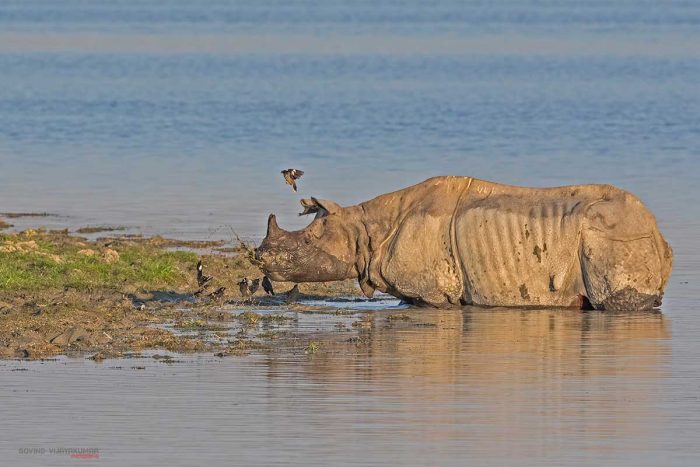
Make it a habit to participate in wildlife photography competitions regularly.
It is not necessary that you need to win a prize. But, you will come to know where you stand.
👉🏻📖 READ: How to Increase your Chances of Winning a Photography Competition?
32. Use Teleconverters with Prime Telephoto lenses
Teleconverters are the best camera accessories for a wildlife photographer. It helps to get that extra reach.
I recommend using teleconverters with a prime lens. Using it with a zoom lens will result in a reduction in picture quality and autofocusing speed.
33. Try shooting with Short Telephoto lenses
Short telephoto focal lengths like 70-200mm are good for getting good images of wildlife habitats.
Sometimes, the image of a tiger in its habitat can be more interesting than a tight close-up shot.
34. Use a GoPro action camera
GoPro action cameras are very useful to capture ultra-wide images.
The main advantage of a GoPro camera is that you can place it anywhere you want, with the help of various mounts. It allows you to capture images at different angles and positions.
35. Upload Photos to Stock photography websites
If you are planning to sell wildlife images then uploading good resolution images to stock photography websites is a good option.
Don’t expect to generate a huge amount of income through this. If your image gets purchased multiple times then you can get a decent income.
👉🏻📖 READ: How to generate Income from Wildlife Photography?
36. Get it Right in The Camera
It is a good practice to get the picture right on the camera. It can save your time while post-processing.
37. Read Wildlife Photography Magazines
There are many good wildlife photography magazines out there. You can start reading.
You can use these wildlife photography tips to improve your wildlife images.
38. Carry a Basic Camera Cleaning Kit
You can always expect dirt and dust when you are doing wildlife photography.
So, carrying a basic camera cleaning kit, one which includes a brush, cleaning cloth, a few wet wipes and a blower would be sufficient.
39. Use Clamps
You can make use of clamps on the safari vehicle. It will help you to mount your Gimbal tripod head or any other tripod heads to the vehicle.
40. Use the Thumb rule for Shutter Speed selection
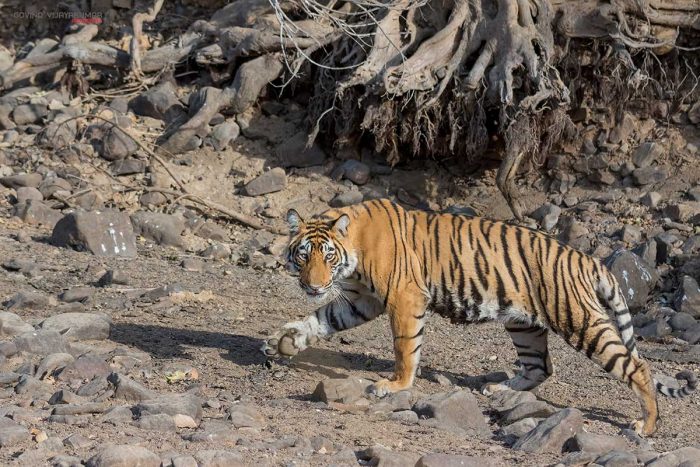
When you are looking for sharp and crisp wildlife photos, you need to ensure that you get the correct shutter speed. So, use the thumb rule for shutter speed selection.
The thumb rule of shutter speed states that the lowest shutter speed chosen should be the reciprocal of your focal length when you are shooting handheld.
For example, if you are using a 500mm lens, then you need to use a minimum shutter speed of 1/500.
41. Use Auto Focus
I don’t recommend using manual focus for wildlife shots. Use autofocus to get a good focus lock on the subject. You can go for manual focus only when the autofocus fails (due to low light conditions).
42. Back Button Focusing
If you are shooting an animal that is lying down or stationary, then use the Back button focusing.
Once the focus is locked, you can press the shutter button when you get the desired pose.
43. Right Technique for Handholding the Camera
Make sure to use the right technique to hold your camera while shooting. Otherwise, your image will be blurry.
44. Be a Fast Photographer
In Wildlife photography, you need to be fast with your camera. You never know what is going to happen in the next second. So, be ready to shoot at any time.
45. Compose with Rule of Thirds
Try the rule of thirds for image composition. It is one of the basic and easy-to-use image compositions technique.
46. Use Vertical and Horizontal Lines for Composition
Vertical and Horizontal lines in the scene can be used for image composition.
47. Composition with Curves
If you have interesting paths in the scene, like pathways inside a forest. Make use of these curves for image composition.
48. Use Auto White Balance
Set Auto White Balance as your default White Balance settings and shoot in RAW.
You can adjust the white balance later in post-processing if required.
49. Use Evaluative Metering
Evaluative metering works 90 percent of the time. So, set it as your default metering mode.
50. Shoot in Manual Mode
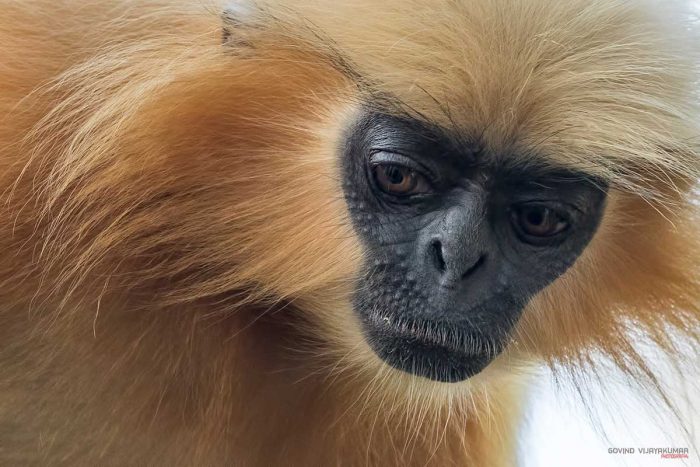
Start using camera manual mode. Don’t let the camera control you. As a wildlife photographer, you should be controlling the camera. This will help you to photograph in any lighting conditions.
51. Photograph Animal Portraits
Capture good animal portraits.
52. Photograph Tight Close Up Headshots
Sometimes, you may find it difficult to fit the full body of the animal into the camera. It is a good opportunity for close-up headshots. You can use fill the frame composition technique here.
53. Capture Reflections
If the subject is near any water body, look out for reflections. Try to capture it along with the subject.
👉🏻📖 READ: How to Photograph Reflections in Water?
54. Photograph Animals in Action
Wildlife action shots are storytelling images. Anyone would love to see such photos. So, don’t miss such opportunities. When you capture action shots, you need to ensure to use a higher shutter speed for a shake-free picture.
You can either go for the manual or shutter priority mode in your camera. You will have to bump up your ISO settings to freeze the action. It can introduce some noise to the image. You can easily remove the noise using any denoising software. But ensure that the image is not too grainy.
55. Capture Details
The fact that you will be using a long telephoto lens for wildlife photography will allow you to get close to the animals. So, when you capture images, make sure to capture details also. The picture will look aesthetically more pleasing when there are subject details and textures in it.
56. Try shooting at Eye Level
It is always good to photograph wild animals at eye level or at a lower angle. It helps to capture the animal with a proper body aspect ratio. It also helps to get more background and foreground blur in the scene.
57. Photograph Story Telling Scenes
Capture storytelling photographs. It can be a series of photographs too.
58. Capture Intimate Moments
If you get a wildlife sighting with a mother and cubs or animals in a group. Look for intimate moments.
Don’t restrict yourself to beautiful portrait shots alone. Try to capture the interaction between the wild animals.
59. Network with other Wildlife Photographers
Make sure that you are in touch with other wildlife photographers. It will help you to get useful pieces of information regarding wildlife and popular wildlife spots.
It will also help you to do wildlife photography trips as a group. Thus, you can lower your trip cost.
60. Learn Post-Processing
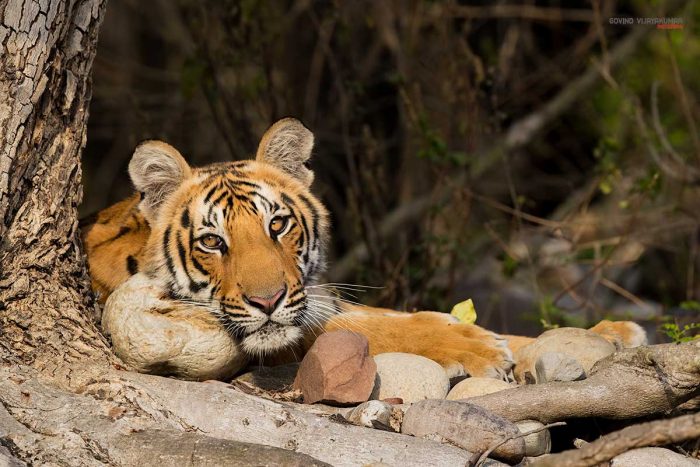
You will always have to retouch your wildlife images. The most common thing that I apply for most of my pictures is cropping. I crop the image to change the composition of the image.
If you don’t know how to do it, I strongly recommend learning it.
61. Use Continuous Focus
Continuous autofocus is a good focusing technique in wildlife photography. It will ensure that the animal which is moving is in focus and you can trigger the shot at the right moment.
62. Make use of Lens Hood
The lens hood helps in removing the unwanted reflection of light inside the lens. So, make use of it to remove the lens flare. I always use my lens hood whenever I shoot wildlife. It not only helps me to avoid the lens flare but also protects the front element of my lens from accidental hits.
63. Explore Urban Wildlife
Don’t restrict your wildlife photography to the forest areas alone. Explore urban areas, you may get some interesting wildlife subjects.
64. Learn something about Wildlife photography Daily
Make it a habit to learn something about Wildlife photography daily.
65. Try Slow Shutter effect for Action Shots
Use a slow shutter speed for action shots to get the motion blur effect in your images. Use a tripod for such shots.
66. Use Exposure Bracketing
If you are having trouble exposing the subject, make use of Exposure bracketing and photograph the scenes in multiple exposures and choose one amongst them.
67. Create HDR Images
Shoot HDR images if your camera supports it or make use of Auto Exposure Bracketing to create images at multiple exposures and later stitch them in Photoshop.
68. Shoot Low Key Images
Try Low Key Photography if you have some shade behind the subject and when the subject is in good light.
69. Shoot High Key Images
Try High Key Photography if you get the subject against a bright background.
70. Develop Your Own Style
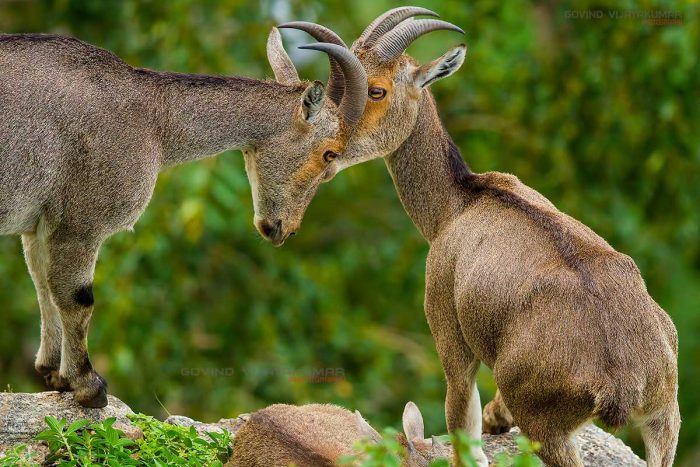
People should be able to differentiate you from the rest of the wildlife photographers through your photographs. So, develop your own style.
71. Print your Wildlife Images
It is a good habit to print your photos. The real feel of a wildlife image can be felt only when it is printed.
You will also come to know if you are getting the picture right or not.
72. Capture Images By by Breaking the Rules of Composition
After learning all the basic rules of composition in photography, try to get good image composition by breaking these rules. This can help you to develop your style.
73. Photograph Wildlife Patterns
Wildlife patterns can be very interesting, like patterns of stripes on a tiger, patterns in the forest e.t.c. Try to capture these wildlife patterns.
74. Try the Double Exposure Technique
Double Exposure is a good technique to try in wildlife photography. If you find 2 relating subjects like the animal and its habitat, go for it. It will help to create some unique wildlife images.
75. Try Camera Traps
Camera Traps can create interesting photos. You can use it to photograph nocturnal animals.
76. Try Shooting Vertically
Don’t restrict yourself by shooting horizontally. Capture vertical frames too. When it comes to portrait vs landscape orientation, some images look better when framed in portrait mode.
77. Try using Shallow Depth Of Field
It is always a good idea to isolate your main subject, which is the animal, in the picture. Using the shallow depth of field is a good way to achieve this subject isolation. It can help you to create pictures in which the wild animal pops stands out. So, shoot with a wide open aperture.
78. Capture Black and White Wildlife Photos
Don’t restrict yourself to colors. Try Black and White Wildlife Photography also. See how your image looks if it is photographed in Monochrome.
79. Try Unusual Angles
Try to get different perspectives on the subject by photographing at different angles.
80. Capture Wildlife frames with Habitat
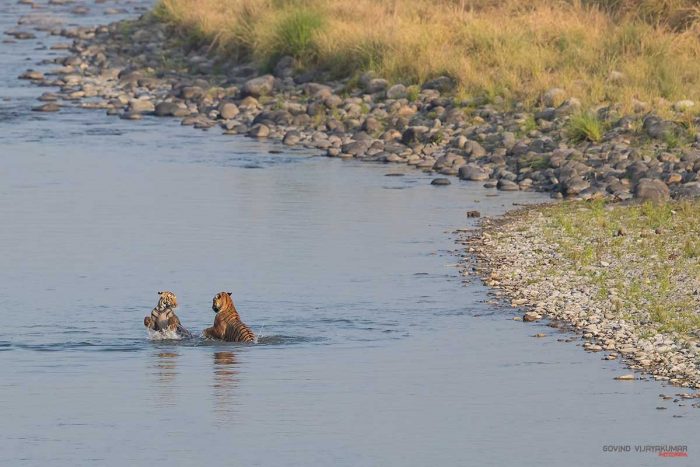
Including the habitat of the subject is a good way to frame your subject. The habitat frames will make the picture look more wild. Otherwise, it is like capturing a close-up image of a wild animal from the zoo.
82. Don’t Shoot For Like Alone
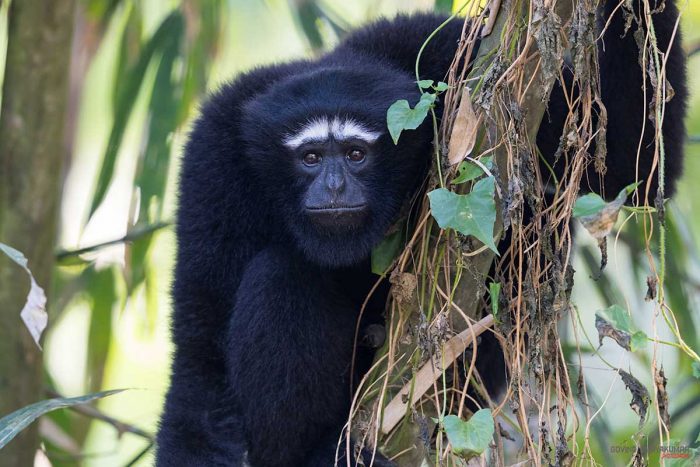
Don’t get carried away by the Likes and Comments on social media. Make sure that you photograph in your style.
83. Make use of Negative Space
Sometimes, the negative space in the frame can bring a great feeling to the picture. Make use of it while composing.
84. Try to Shoot in Low ISOs
It is a good habit to capture the images in low ISO values. Higher ISO values make the picture look grainy. But, it may not be practical in all situations since most wildlife actions happen in low light conditions.
85. Don’t Carry Too many Camera Gears
Like the famous saying, “Too many cooks can spoil the broth“. Too many camera gears will spoil your photo. So, carry only what is required.
👉🏻 📖 READ MORE: Pro Wildlife Safari Photography Tips

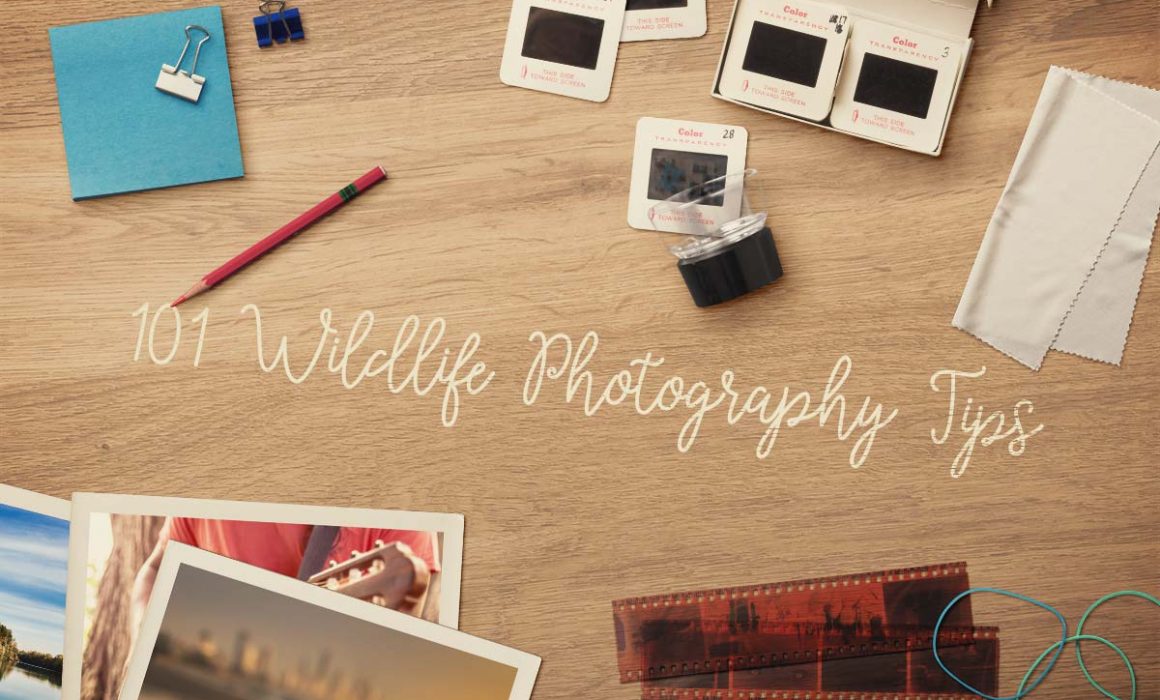
My sister likes taking pictures of nature and wanted to go to Madagascar to take photos. It was explained here that when want to take wildlife photos, she should be patient and use a prime lens. Furthermore, it’s recommended to talk to experts when considering trying Madagascar wildlife photo tour.